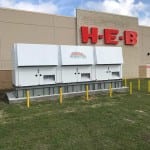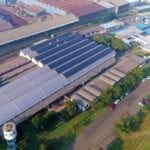A microgrid is a discrete energy system consisting of distributed energy resources, such as solar panels, wind turbines, backup generators, and battery storage systems, and loads capable of operating in parallel with, or independently from, the main power grid. A microgrid generally operates while connected to the grid, but importantly, it can break off and operate on its own using local energy resources in times of crisis, such as during storms or power outages, or for other reasons.
Microgrids are all the rage these days, but would adding one to your power system provide enough benefit to justify the cost? Answering that question requires a detailed understanding not only of the technology involved, but also the energy landscape in your local area. (Learn more about microgrids by registering for POWER’s upcoming webinar on solutions both in front of, and behind, the meter.)
“People look at [microgrids] because they are a sustainable solution. They’re generally cleaner than [the electricity] you’re buying from the utility—your source of power is cleaner,” Mike Byrnes, executive vice president and Chief Operating Officer of SourceOne, a Veolia company, said as a guest on The POWER Podcast. “What gets them across the finish line is it adds resiliency, and typically, the lifecycle cost is less than your business-as-usual case.”
SourceOne is an energy consulting firm that provides highly specialized energy management, engineering, and owner’s representative services for commercial, industrial, and municipal energy concerns. It has been crafting innovative solutions that help customers ensure sustainable, reliable, and cost-effective utility operations for more than 20 years, so Byrnes has a long history with microgrid technology.
“We love sustainability. We love reducing greenhouse gases. We love building resiliency for people with microgrids,” said Byrnes. But, a microgrid requires a serious commitment from the organization doing the project, and Byrnes said you don’t usually get that unless there is a financial benefit. “Those are the ones that are getting built—the ones that have really solid paybacks for people,” he explained.
Byrnes noted that decreasing prices for solar power and battery storage systems are making those resources very attractive for many customers. “The price point for renewables has come down so far that it’s become in everybody’s reach,” he said. “Every project we work on right now, instead of just having CHP [combined heat and power]—which you still need because you need the heat component out of it—typically, will have a solar and a battery storage component, or at least to start everybody wants it, and they make great sense. It gives you so much more flexibility in the market, and your ability to actively manage your electric usage is huge.”
On the podcast, Byrnes offered several examples of work SourceOne has done not only on microgrid projects, but also incorporating CHP, and conducting energy efficiency audits and benchmarking studies. To learn more about the company and projects it has completed, listen to the full interview with Byrnes on The POWER Podcast. Follow the links below to subscribe via your favorite platform or click on the SoundCloud player to listen now:
For more power podcasts, visit The POWER Podcast archives.
—Aaron Larson is POWER’s executive editor (@AaronL_Power, @POWERmagazine).










